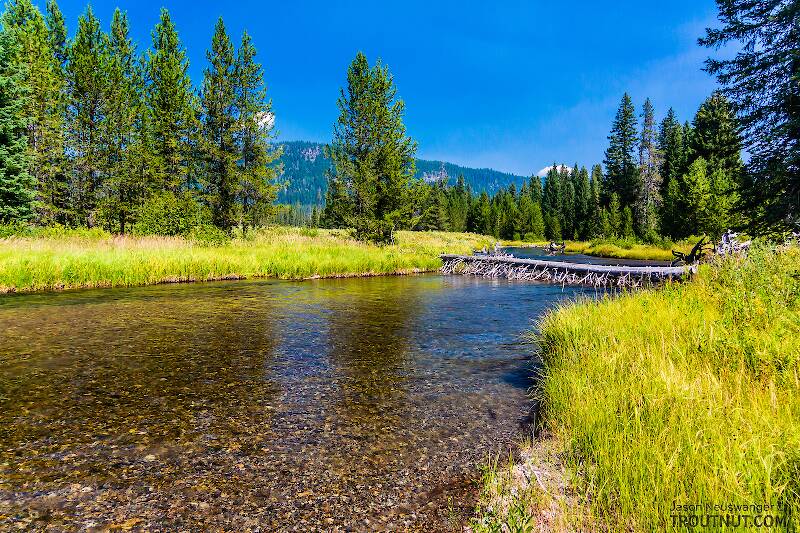
Salmonflies
Pteronarcys californica
The giant Salmonflies of the Western mountains are legendary for their proclivity to elicit consistent dry-fly action and ferocious strikes.

Mayfly Species Procloeon simile (Tiny Sulphur Duns)
Species Range
Physical description
Most physical descriptions on Troutnut are direct or slightly edited quotes from the original scientific sources describing or updating the species, although there may be errors in copying them to this website. Such descriptions aren't always definitive, because species often turn out to be more variable than the original describers observed. In some cases, only a single specimen was described! However, they are useful starting points.
Male Spinner
Wing length: 5.5-6 mm
Abdominal tergites 2-6 of male imago hyaline white, the posterior margins ruddy brown, with paler ruddy brown shading on the posterior third of each.
Head and thorax blackish. Lateral margin of mesonotum distinctly pale yellow brown. Legs yellowish, the fore leg deeper in color than the others; ruddy marks at base, middle and apex of the femora; a dark hair-line connects these ruddy markings. Wings hyaline. Hind wings long and narrow (see fig. 165).
Abdominal tergites 2-6 hyaline white; the posterior margin of each rather deep ruddy brown, with paler ruddy brown shading over the posterior third of each tergite, extending forward on each side above the spiracular line, almost to the anterior margin. Sternites 2-6 hyaline white, the posterior margins with traces of ruddy markings. Tergites 7-10 ruddy brown; sternites opaque whitish, 8 and 9 tinged with ruddy brown. Spiracular line black. Tails white.
This species is close to C. ozburni (now a synonym of Procloeon ozburni), but may be distinguished from it by the ruddier brown markings of the abdomen and the more extensive ruddy brown shading of the anterior tergites. The legs also are deeper in color, and more marked with ruddy color.
Start a Discussion of Procloeon simile
References
- Needham, James G., Jay R. Traver, and Yin-Chi Hsu. 1935. The Biology of Mayflies. Comstock Publishing Company, Inc.
Mayfly Species Procloeon simile (Tiny Sulphur Duns)
Species Range
Common Name
Resources
- NatureServe
- Integrated Taxonomic Information System
- Global Biodiversity Information Facility
- Described by McDunnough (1924)


